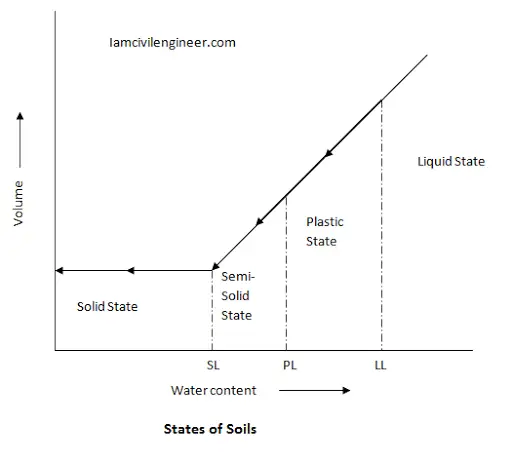Saad Iqbal | 🗓️Modified: October 15, 2016 | ⏳Read Time: 5 min | 👁Post Views: 954
You might have heard a lot in geotechnical engineering lectures about Atterberg limits but today I have brought to you a very unique and useful importation about Atterberg Limits which you might not even know.

Albert Mauritz Atterberg was a Swedish chemist and agriculture engineer, born on March 19, 1846, received his Doctorate Degree in Chemistry from Uppsala Univeristy in 1872 went to Sweden on tour and study becoming principal of Chemical Station and Seed Control Institute at Kalmar.
At the age of 54 during continuing his research on chemistry and classification and plasticity of soils he suggested the limits of 0.002 mm as classification for clay particles. He also suggested plasticity as particular property of clay material and thus in result he arrived at consistency limits of soil.
The importance of the work of Atterberg had never been realized until Karl Terzaghi, who is known as father of soil mechanics, realizing the importance of this classification explained the consistency limits.
Firmness. Inflexibility and rigidity of soil is usually denoted and explained by consistency of soil. Consistency is a very important parameter of fine-grained soils usually clayey soils which explains the physical state in which the soil exists.
Atterberg had mentioned in 1911 that fine grained soil has 4 physical states :
1. Liquid State
2. Plastic State
3. Semi-Solid State
4. Solid State
The amount of water present in the voids between soil particles is expressed as percentage known as moisture content. Moisture content is the actual reason for the conversion of soil from one state into other.
Consistency limit or Atterberg’s Limit is actually the water content at which the soil changes from one state into other.
Lets now look at the states of soil and their associated consistency limits in detail;
Do you know that river with its flow bring a lot of sediments and boulder due to the force of water that cause erosion, wear and tear. This soil sediments of different gradation actually flow like water. Reason of such a flow is due to abundance of water that causes zero shearing resistance and hence at that stage soil acts like a liquid.
The same soil if deposited on some bank of river and after many years if the river shifts it way or path the same flowing soil becomes hard and stiff. If we study this phenomenon deeply we will come to know that as the water content is reduced in the flowing soil, the same soil becomes stiffer and starts developing resistance to shear deformation.
What is Liquid Limit?
At some particular water content, the soil becomes plastic. As explained in a graph as shown. The water content at which the soil changes from the liquid state to the plastic state is known as liquid limit denoted as L.L. In other words, the liquid limit is the water content at which the soil ceases to be liquid.
What is Plastic Limit?
As we know from the plasticity of fine grained clayey soil that it can be molded irreversibly to various shapes. As the water content is reduced further the plasticity of the soil decreases. Ultimately the soil passes from the plastic state to the semi-solid state when it stops behaving as a plastic. It cracks when molded. The water content at which the soil becomes semi-solid is known as plastic limit known as P.L. In other words the plastic limit is the water content at which the soil just fails to behave plastically.
What is Plasticity Index ?
The numerical difference between the liquid limit and the plastic limit is known as plasticity index known as P.I as give.
Plasticity Index (PI) = Liquid Limit (LL) – Plastic Limit (PL)
The soil remains plastic when the water content is between the liquid limit and the plastic limit. The plasticity index is an important index property of fine-grained soils.
Shrinkage Limit
When the water content is reduced below the plastic limit, the soil attains a semi-solid state. The soil cracks when moulded. In semi-solid state, the volume of the soil decreases with a decrease in water content until a stage occurs when further reduction of water content does not cause any reduction in the volume of the soil.
The soil is said to have reached a solid state.
The water content at which the soil changes from the semi-solid state to the solid state is known as the shrinkage limit denoted as SL.
Below the shrinkage limit, the soil does not remains saturated. Air enters the voids of the soil. However, because of capillary tension developed, the volume of the soil does not change. Thus, the shrinkage limit is the water content at which the soil stops shrinking further and attains a constant volume. The shrinkage limit may also be defined as the lowest water content at which the soil is fully saturated.

